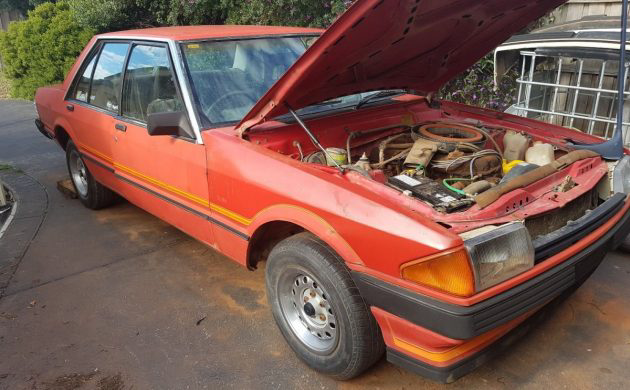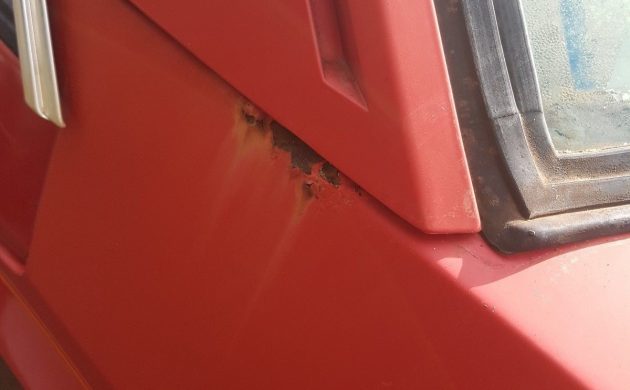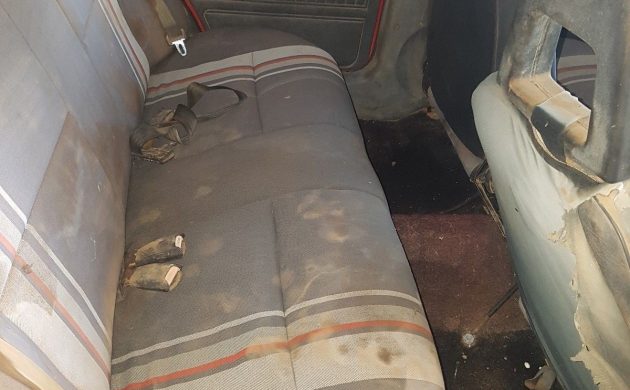A few weeks ago I wrote a story about a 1984 Holden Commodore, and in the spirit of fair play, today we are looking at the car that was its direct competitor at the time, the Ford Falcon XE. This particular car is the sporty derivative, which was referred to as the S Pack. You will find this car listed for sale here on eBay. It is located in Mooroolbark, Victoria, and is being offered for sale with a clear title. The owner has set the opening bid for the Falcon at $5,000.
Over the years the Australian automotive market has undergone wholesale change, but from the late 1940s until the early years of the 21st century, the volume-selling cars and market leaders were the family cars offered by Ford and Holden. From the late 1960s these offerings included the Holden Kingswood and later on the Commodore, and the Ford Falcon. Holden had always traditionally been the market leader, with Ford never quite able to peg back the margin. In 1982, Ford introduced the Falcon XE, and for a brief period, the market shifted. The XE allowed Falcon sales to overtake those of the Commodore, and this situation remained fairly static until Holden introduced a larger Commodore in 1988, and retook the lead in the sales race.
The Falcon XE was available in a number of trim levels, from the base GL model, through to the Fairmont and the range-topping Ghia ESP. The S Pack was Ford’s sportier derivative and included updates that were largely cosmetic, with only a few minor tweaks to tire and suspension specifications. This particular S Pack was built in 1984, which was the final year of production of the Falcon XE before it was replaced with the updated Falcon XF. This XE looks rough, but the body is in surprisingly good condition. Falcons of this era weren’t as prone to rust issues as earlier models, with the lower quarter panels and the rear pillar area being the weakest points. The quarters look solid, and there is minimal rust on the pillars. The S Pack specific wheels are present, although it appears that the trim rings on the passenger side of the car may be aftermarket items. This may present some problems in locating good replacements, as these were very prone to curb rubbing. The other S Pack item that appears to be present is the black front spoiler extension. The body has a few minor dings but generally seems to be in good condition.
The interior of the Falcon appears to be complete, but it also looks like it has had a pretty hard life. Thankfully the dash and its plastic items were all remarkably hard-wearing, and there is no dash pad to have to worry about. The sports instrument cluster looks to be intact, as does the original digital clock and factory radio/cassette player. The seat upholstery looks pretty worn, torn and faded, but replacement material is available. Some of the plastic trim items are faded, as is the carpet and the lid to the console, but the door trims look to be quite decent. There is no word on the state of the headliner, but these were pretty robust in Falcons of this era.
Under the hood is the 250ci straight-six engine, which is backed by a 4-speed manual transmission. The engine in the XE is quite a primitive design, and it actually dates back to the 1950s. It underwent a number of upgrades over the years, and the biggest of these up to this point occurred in 1980 when the engine received an alloy cylinder head to replace the cast iron unit. For the XE, further upgrades were introduced. These included all engines receiving Weber carburetors, except the range-topping engine, which received fuel injection. The 250 engine is a fairly tough unit and can survive some pretty awful levels of neglect. There is no word on whether this engine runs, or if it turns freely. Rebuilding one of these is pretty easy, and their only real weakness is corrosion in the alloy cylinder head if the owner has not run the car with the correct corrosion inhibitor. The manual transmission is also under-stressed in this application, so shouldn’t give any problems.
The Falcon XE was the market leader, and throughout its model life, Ford sold a total of 193,890 across all of its derivatives. When they were new they were a common sight on Australian roads, but today they are quite a rarity. For many years these were a firm favorite among the dirt-track speedway fraternity, as the engines provided surprising levels of power, while the coil sprung rear end allowed the cars to deliver that power to the track. Those that managed to avoid that fate were usually just driven into the ground and then sent to wrecking yards, as they were considered to be just another common old family car. It wasn’t that many years ago that you could have bought any number of these for under $1,000, but dwindling numbers coupled with the end of local manufacturing for Ford in Australia has seen values increase dramatically. This one is now priced at about five times what its market value would have been ten years ago, but when it comes to the market value of this model, I think that this is just the beginning.








looks like a four door Fox body .
If anyone wants one of these, flood the front windscreen/vents area to make sure it doesn’t leak inside the passenger side behind the dash – otherwise you will be in for thousands of dollars in body repairs. Run forever but the body rusted within years.
Total bogan magnet. That someone is asking $5k for this pig in lipstick, or worse that some muppet would pay half of that speaks to our (Australia’s) bizarre car market. There are plenty of eighties euro and jap cars in that ballpark that are preferable.
Yuk!
Odds are that there’s a lot more tin worm in this dog. The factory ‘rustproofing’ was a farce. Even new, these were a crude car. Front suspension from the early 1960s, an under dash handbrake, leaf springs on the wagons, and 3 on the tree as the base transmission. Did I mention recirculating ball manual steering with 5 turns lock to lock as standard? Was this the 80’s? Spec sheet reads more like 1966.That’s why I call them crude, even primitive.
Right on Chris – the only thing that saved them was that the Taxi industry in Australia bought them by the thousands!!
I was going to remark that from the side anyway, it looks a lot like an American Ford Fairmont or Mercury Zephyr. I tooled around in lots of these p.o.s. Hertzmobiles and it made me shy away from most all Fox platforms with maybe a mark 7 or Mustang convertible upgrade as an exception. Hope the Aussie cars were a bit more exciting.
This looks like it was based off of the second generation European Ford Granada . I’m surprised it would retain the front suspension and steering of the old US Falcon based cars
it should be noted that the barn find ESP version recently sold for $110,000.
https://www.whichcar.com.au/news/shed-find-falcon-esp-sells-for-111000
The XD, XE and XF were all loss-leading items, Ford made money on replacement door handles which seemed to break with the utmost regularity. Besides being hideously ugly, and generally just piles of crap with built quality worse than the Commodore, they did sell in volumes, which kinda says a lot of Aussie car buyers and their tastes!! Yuck!!
They used these as cop cars for a while but the bad guys kept getting away because the cops couldnt get in to the car due to the door handles always breaking
Be kind to our mates down under. It seems they got a fair share of our hand me downs and no bean counters to go with em. Think Durango Ute. Wouldn’t have minded driving one around. Just watched the original Mad Max,
You got Arnold Schwarzeneggar arms from driving the old XE and XFs. Heaviest steering ever. $5000 though? Yeah… nah. Not even a bogan price.